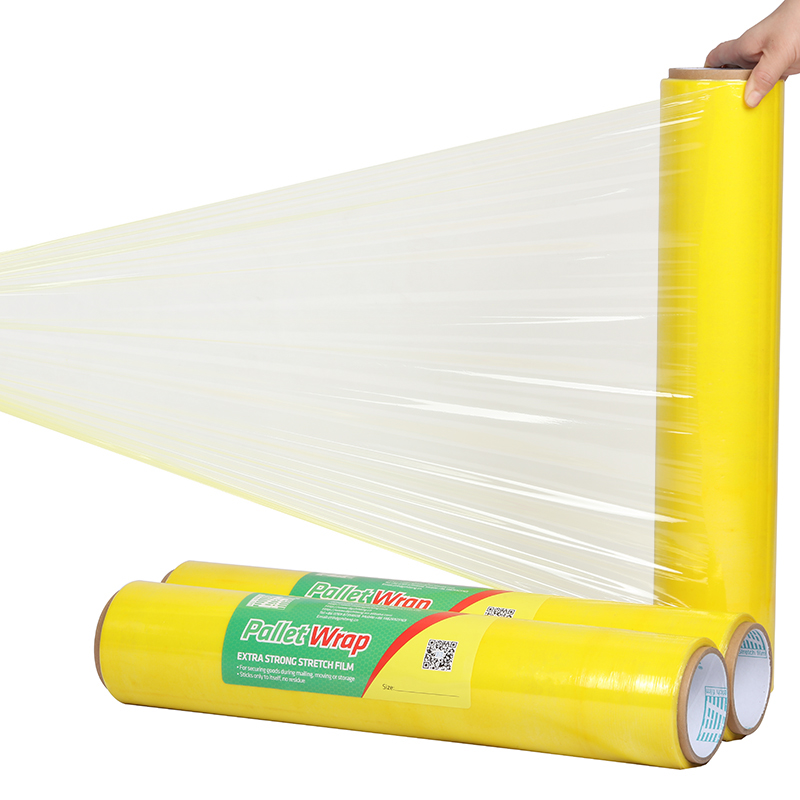PE stretch film viscosity debugging method
PE stretch film viscosity debugging method
The pe stretch film uses the film's super winding force and retractability to bundle the product into a unit compactly and firmly, without any looseness and separation, and without sharp edges and stickiness, even in unfavorable environments. Damage to the packaging. So how should the viscosity of PE stretch film be debugged?
The debugging method of PE stretch film viscosity:
A high-quality stretch film should have the characteristics of high transparency, high longitudinal elongation, high yield point, high transverse tear strength, and good puncture performance. The application field is limited since the general single-layer casting cannot achieve single-sided adhesion. Single-layer and double-layer casting are not as extensive as three-layer casting in material selection. The formula cost is also high, so the structure of the three-layer co-extrusion is still ideal. In recent years, with the development of materials and technologies, such as the advent of ultra-low density polyethylene materials, it can also be dipped on one side.
Suitable viscosity makes the packaging film layer and layer outside the goods stick together to make the goods firm. There are two main ways to obtain the viscosity: adding polyisobutylene or its masterbatch to the polymer and blending VLDPE. PIB is a translucent viscous liquid. Direct addition requires special equipment or equipment modification. Generally, PIB masterbatch is used.
There is a process for migrating polyisobutylene, which usually takes three days. In addition, it is also affected by temperature. When the temperature is high, the viscosity is strong; when it is low, it is not too sticky, and the viscosity is significantly reduced after stretching. Therefore, the finished film is stored in a specific temperature range (suggested storage temperature is 15℃~25℃). Polyisobutylene is a small molecule polymer that is easy to migrate and easily contaminates packaged items, especially for the packaging of food and precision instruments.
VLDPE is a high polymer used for the inner or outer layer of the multi-layer co-extruded stretch film. It can realize single-sided adhesion and realize self-adhesion through the raw material itself, which meets various hygienic standards. Mixing VLDPE, although the viscosity is slightly worse, there is no special requirement for the equipment, the viscosity is relatively stable, not controlled by time, but also affected by temperature, when the temperature is higher than 30 ℃, it is relatively dense, and when the temperature is lower than 15 ℃, the viscosity is slightly worse. LLDPE in the adhesive layer can be adjusted to achieve the desired viscosity.
It is produced by the proportion of LLDPE resin and tackifier special additives, which can produce multi-functional stretch films such as hand-use, resistance-type machine, pre-stretching machine, anti-ultraviolet, anti-static and anti-rust. It has the following advantages: using double-layer co-extrusion equipment, the extruded stretch film can exert all the characteristics of each polymer, such as transparency, tensile strength, anti-piercing strength, and it is in good condition when it reaches the melting point. It has good tensile properties, good transparency, and uniform thickness.
In addition to the advantages mentioned above of the PE stretch film produced by the ratio of LLDPE resin and tackifier special additives, there are also longitudinal extensibility, good resilience, good transverse tear resistance, and excellent self-adhesive overlap. It is an environmentally friendly recyclable material, tasteless, non-toxic, and directly packaged for food. It can manufacture single-sided sticky products, reduce noise during winding and stretching, and reduce dust and sand during transportation and storage.

评论
发表评论